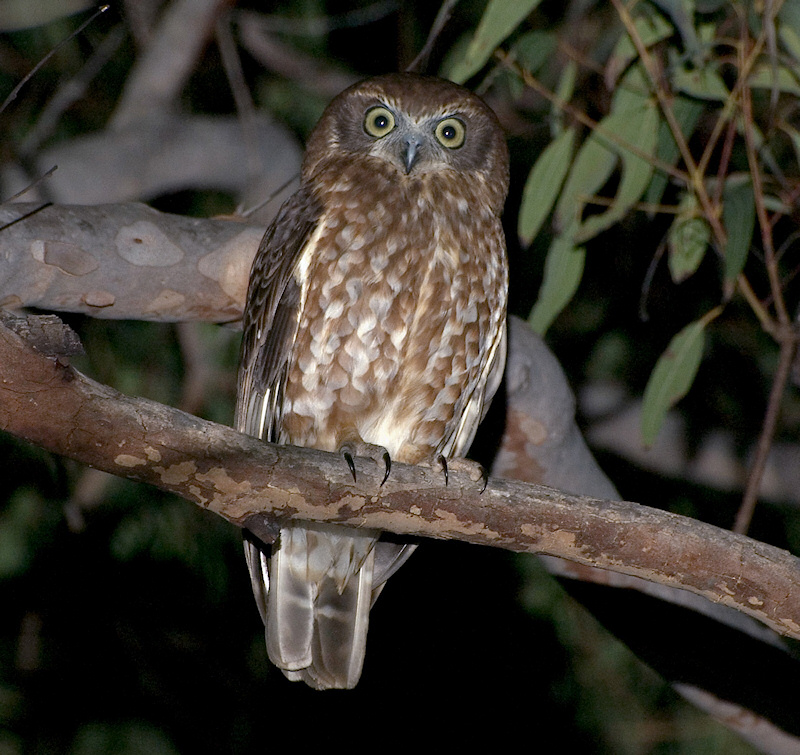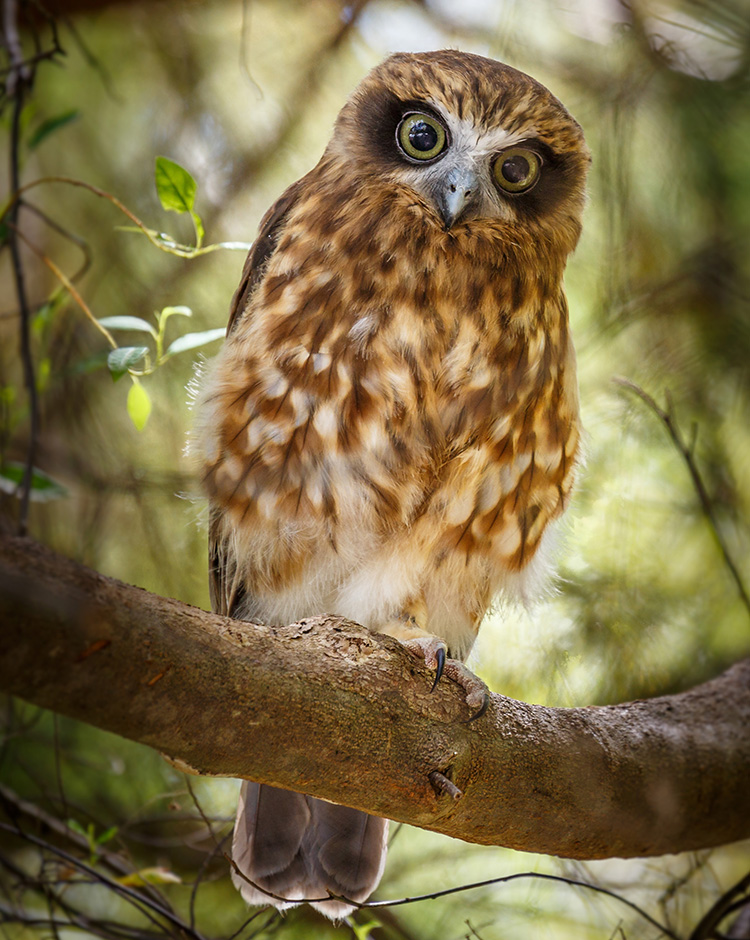The Australian boobook (Ninox boobook), which is known in some regions as the mopoke, is a species of owl native to mainland Australia. Its name is derived from its two-tone boo-book call. The smallest owl on the Australian mainland and it’s commonly found throughout the Blue Mountains, this owl has tufts of feathers on its head (like ears) and has yellow eyes, which make it easier to spot among the branches at night when it flies out to hunt its prey.
The Aussie Boobook
The Australian boobook is Australia’s smallest owl. It is nocturnal, meaning it hunts in the dark and its keen eyesight makes it an effective night hunter. This tiny owl can hunt all kinds of prey including insects, small mammals like mice and even other birds! They can even hunt during daylight hours if there isn’t enough food available at night time. Their favourite food is frogs and they will also eat lizards, snakes, moths and grasshoppers. A group of owls are called a parliament or a ‘hoo-ha’. When they want to get together to talk about something important or plan a hunting trip they call out to each other with their trademark ‘boo-book’ call until everyone has arrived.
Australian boobook has been designated the official name by the International Ornithological Committee, changed from “southern boobook” in 2019 with the separation of some Indonesian subspecies.
English ornithologist John Latham described the boobook owl as Strix boobook in 1801, before giving it its scientific name, taking its species epithet from a local Dharug word for the bird.
A quiet night in the Blue Mountains
When you’re listening to an Australian boobook owl, chances are you’re not paying much attention to your surroundings. This is a good thing. Unless, of course, you happen to be in the Blue Mountains around dusk, at which point it might make more sense to heed your surroundings and stop looking at your phone. They tend to let you know when they don’t like being disturbed. The Australian boobook owl is one such creature, and its call has been described as sounding like two pieces of sandpaper being rubbed together. So if you hear that sound while hiking through Katoomba, do yourself a favour: Stop what you’re doing and look up.
Breeding
The breeding season is August and September almost throughout Australia. Pairs perch close together with the male giving ‘pot pot por’ call for long periods. This may commence well before start of season.
One or both birds may roost in nest hole together for weeks before breeding starts but these out-of-season roosts are not always chosen as the eventual nest site. The nest can be a wide variety of tree hollows – the tree may be alive or dead with a hole in a limb or the main trunk, upright or sloping.
The male cleans out the hollow before eggs are laid – usually 2 or 3, rarely up to 5. The eggs are white and almost round, being 40-45mm by 32-37mm. They are laid at 1 to 2 day intervals and are incubated for 35 days. The young have white down and are fledged in 5 to 6 weeks. Like other Ninox Owls, they leave the nest well below full size and with abundant down. They are probably dependent on their parents for 2 to 3 months after this.
What do they eat?
Like most owls, they predominantly eat insects and small vertebrates, like lizards and mice. They are also known to prey on larger animals such as quolls, bandicoots and sometimes young kangaroos if they can catch them. The Australian boobook owl is a nocturnal hunter that hunts by swooping down from its perch onto its prey. It has been observed hunting in pairs or family groups of up to five birds at night.
Where can you find them?
You can find Australian Boobooks all throughout Australia but particularly in the Blue Mountains. They’re most common in areas with lots of trees and shrubs, such as parks, gardens and bushland. Though you might get lucky and spot one flying around your backyard at night! What do they look like?: The Australian Boobook is a small owl, measuring only 25–33 cm long when fully grown. It has brown-grey plumage with white spots on its chest and belly. The facial disc is white with a dark rim, and it has yellow eyes. Its legs are feathered to about halfway down its thighs; its toes are long and have sharp talons used for catching prey in flight or on the ground.



